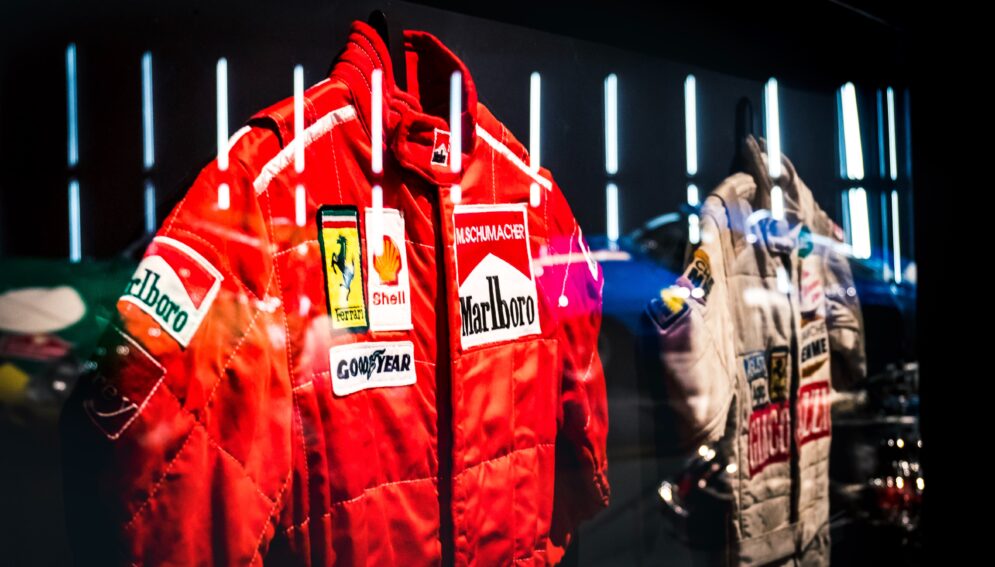ABSTRACT
Ferrari’s job, is that of a “brander”, that is, a brand cultivator.
First, it arouses desire among the public, – unreachable for many- with which it achieves the energy of its marketing and then it monetises it by offering much more affordable products.
Building a brand is much more than selecting Pantone colours: it is about having a clear idea of the brand’s DNA and values in order to create a determined sense and express it. Ferrari is well aware of it, and thus it takes care of every detail regarding the shopping experience
__________
When Luca di Montezemolo, President of the Ferrari motor-racing team, made official his sponsorship agreement with Banco de Santander’s President Emilio Botin, they exchanged gifts: Botin gave Montezemolo a red blazer, who gave him the sculpture of an engine in return.
Ferrari began in a small town garage and its adrenalin would fire up every time he heard an engine roar.
A motor-racing team or a luxury car manufacturer?
To talk about Ferrari is to talk about the essence of Formula One.
This motor-racing team is a mith itself.
Ferrari began as a manufacturer of great cars. Yet, it would have not become what it is if it hadn’t sought to become a top-notch brand.
Among its brand values there is the “will to compete”. Competing you not only improve, but you also innovate. Therefore, Ferrari’s natural habitat is the F1 races, an extremely high-tech environment, practiced almost all over the world, and which is also very expensive, even elitist. This latter aspect is perfect for the brand, as Ferrari is a luxury company with a sportive connotation.
Ferrari only sells 6,587 cars per year, at a price that only very few can afford (that is a real luxury). In addition, the client must wait a whole year to have the car delivered. In fact, the firm is in a premeditated permanent “out of stock” status.
All these makes Ferrari a brand so desired as well as so unreachable for most. Well… it actually pretends to be unreachable, but the truth is that 80% of Ferrari’s turnover does not come from cars but from all types of items sold at their stores. Statistically speaking, it is basically a fashion and design firm that besides, also sells luxury cars.
However, Ferrari’s job is that of a “brander”, that is, a brand cultivator. First, it arouses desire among the public, – unreachable for many- with which it achieves the energy of its marketing and then it monetises it by offering much more affordable products.
Building a brand involves much more than selecting Pantone colours
They have a very clear brand DNA: passion for competition, quality in everything they do, their very own Italian dolce vita lifestyle, and exclusivity. Ferrari is continuously receiving offers to out-license the brand.
“You just can’t imagine how much money we decide not to earn when we say ‘no’ to highly tempting economic proposals, but which would jeopardize the brand’”, says Massimiliano Ferrari, Ferrari’s retail director.
This is sheer strategic vision for a company in retailing, where it is too easy to surrender to the short-term-gain temptations.
At their 30 stores, operating in prime locations worldwide, the company takes care of every detail regarding the shopping experience. When customers cross the outlet’s entrance, they hear the unmistakable sound of an F1 car passing by full throttle. The shelves are concave, with a translucent surface that subtly frames the products on display. The furniture are carefully designed, yet they never take over the protagonism.
They even let customers take pictures. Many take their souvenir picture in front of the cavallino rampante (the rampant horse), Ferrari’s logo. Can you imagine your customers taking pictures next to your logo?
Their store is a three-dimensional and multisensory experience of the brand. Values are not stated, but felt and sensed intuitively. Ferrari is a master in creating and delivering a given sense.
No wonder why Ferrari’s sales rose 27% in 2009.
Lluis Martinez-Ribes
Source: Distribución Actualidad, the spanish retail magazine
(nº 418, September 2010)
__________




